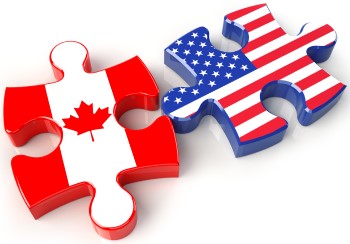Reinstate a new Visitor Rebate Program
Canada must stay competitive in the global tourism market.
In 2007, the Canadian Government became the first member country of the Organization for Economic Co operation and Development (OECD) to cancel its Visitor Rebate Program. To date, Canada is the only OECD country with a federal sales tax to not provide a rebate to visitors. Since the Government’s decision to move away from the Visitor Rebate Program, many industries dependent on tourism and retailers in Canada are calling for a reinstatement of the program, with good reason.
Tourism GDP has been reduced by nearly $6 billion dollars over the past decade as a result of the cancellation of the Visitor Rebate Program. While this policy decision was made with a goal to save money, an RCC study found that the government lost $137.9 million a year in revenue, well above the annual administrative program costs of $86.3 million a year. This translates to a net loss of $51.6 million a year by not having a Visitor Rebate Program.

This has had direct impact on Canadian retailers, as well as many other industries that rely on Canadian tourism. In fact, since 2007, in-trip spending has fallen by $66 a person per trip to Canada. Japan recently implemented a Visitor Rebate Program which allows its retailers to offer tax- free goods to visitors. This move has boosted its tourism GDP from $14.2 billion in 2013 to nearly $35.3 billion in 2017. Introducing a similar program in Canada would be a boom for retail in Canada as well as for the Canadian government.
A newly elected government must
- Reinstate a new, more efficient visitor rebate program for Canada, similar to that of Japan, allowing retailers the ability to issue tax rebates at the point of sale giving a boost to the tourism industry and retailers in Canada.
Canadians are paying up to 10% extra on apparel and shoes.

Canadians are paying around $5 billion in hidden taxes each year because of tariffs, increasing living costs unnecessarily.
Among the worst offenders of these embedded taxes are tariffs on apparel and shoes – in some cases as high as 20% – resulting in a cost of $2 billion annually to Canadians. This means that when Canadians purchase a $150 pair of shoes, they’re often paying $16 more than if there wasn’t a tariff. The situation for apparel is similar. Canadians are paying more for the goods they need because of an outdated system that is no longer relevant in the Canadian context.
Historically, tariffs were used as a method for protecting our domestic industries from out-of-country competition. However, today only 4.4% of textile and clothing products
used by Canadians are manufactured domestically. Since these tariffs are remnants of an outdated system that was designed to protect an industry that has moved offshore, they now act only as a hidden tax to consumers.
A newly elected government must
- Eliminate tariffs on clothing and shoes to make life more affordable for Canadian families.
- Undertake a review of tariffs to understand what is still needed to protect Canadian businesses and what is now only a legacy system.
Harmonization allows for more product choice and affordable prices for Canadians.
RCC has been a significant contributor to the Canada-U.S. Regulatory Cooperation Council which focuses on harmonizing regulations between the U.S. and Canada. Unfortunately, we have seen very little success in the area of consumer product safety. Having disparities in this area limits product choice and availability in the Canadian market, which also increases the cost of many items.
We know harmonization is achievable. For example, in the area of food safety, there is now mutual recognition of U.S. and Canadian food safety standards under the new Safe Food for Canadians Regulations. There is no reason to have these differences with our largest trading partner. Harmonization of product safety regulations will increase choice and lower costs.

A newly elected government must
- Reaffirm to joint North American standards on all regulatory proposals moving forward.
- Urge the Regulatory Cooperation Council to harmonize regulations in the area of consumer product safety.
Canadians pay some of the highest interchange fees in the world.

Lowering these fees will make doing business in Canada more affordable and will save Canadians money on their everyday purchases.
Approximately 1.5% of Canadian credit card spending goes directly to the big credit card companies and their issuing banks, drastically reducing a retailer’s profit margin. This is especially true for small business owners who pay a fee each time a customer uses their credit card.
This situation is even worse for online payments, or “card not present” payments, where the credit card companies charge an additional fee.
RCC has long fought for lower credit card interchange rates, securing a victory in 2015 with a reduction of the average rate from 1.65% down to 1.50%. Further success has been achieved with a commitment from Visa and MasterCard to lower their average rates from 1.50% to 1.40% in 2020. Altogether, the reduction efforts achieved by RCC will save merchants over $1 billion annually.
Despite these wins, Canadians still pay among the highest interchange fees in the world, and Canada is one of the few industrialized countries without regulations on this subject. This needs to change.
Worldwide, 37 countries have recognized the uncompetitive level of interchange fees and have moved to reduce and cap them. For example, France limits interchange to 0.28%, the EU is moved to a 0.30% cap across the board, Australia limits interchange to an average of 0.50%.
A newly elected government must
- Lower Canada’s interchange fees to align with other international jurisdictions to support small businesses in Canada.
- Lower the fees charged for online transactions, which are currently treated as “card not present.
